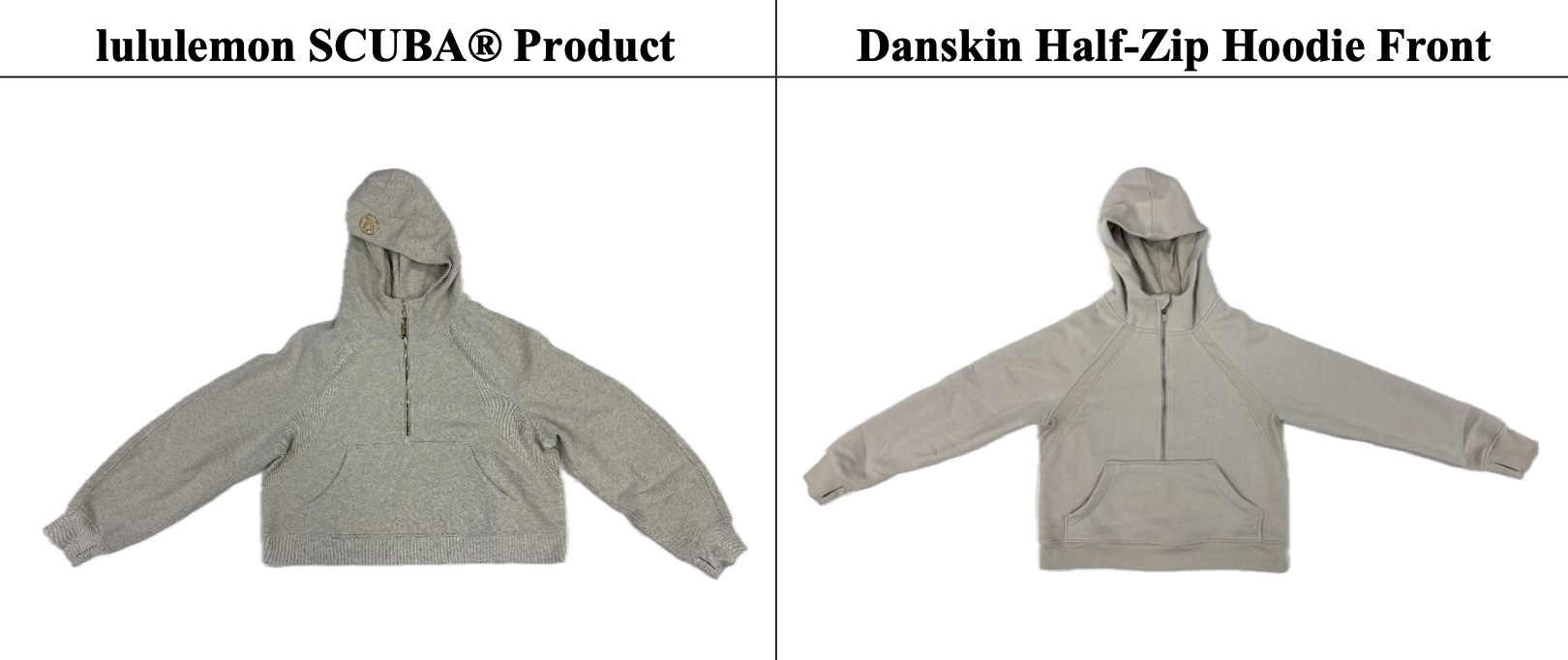Lululemon has filed a comprehensive federal lawsuit against Costco, alleging the retail giant violated multiple trademarks, design patents, and trade dress protections by selling unauthorized “knockoff” versions of the athletic wear company’s most popular products. The case, filed in California federal court on June 27, 2025, represents an escalation in the ongoing battle between premium brands and retailers selling lower-priced “dupes” that closely mimic high-end designs.
The heart of Lululemon’s complaint centers on what it calls deliberate copying of three signature product lines that have become cultural phenomena. The company alleges Costco infringed on its SCUBA hoodies and sweatshirts, which are protected by registered design patents covering their distinctive kangaroo pockets and ornamental lines. Similarly, Lululemon claims Costco copied its DEFINE jackets, protected by registered trade dress featuring unique curvilinear ornamental lines on the front and back. The lawsuit also targets Costco’s version of Lululemon’s popular ABC pants, which the athletic wear company says unlawfully replicates specific design elements including ornamental lines and metallic circle details.
Beyond design copying, Lululemon accuses Costco of direct trademark infringement by using the “SCUBA” name on men’s athletic wear and appropriating the company’s distinctive “TIDEWATER TEAL” color designation. The lawsuit specifically identifies six Costco products as violations: the Danskin Ladies Half-Zip Hoodie, Danskin Half-Zip Pullover, Jockey Ladies Yoga Jacket, Spyder Women’s Yoga Jacket, Hi-Tec Men’s Scuba Full Zip, and Kirkland 5 Pocket Performance Pant. Notably, some of these products were marketed using Lululemon’s trademarked color name “Tidewater Teal.”
The legal action comes after Lululemon’s previous attempts to address the issue through traditional channels failed. The company sent Costco a cease and desist letter in November 2024, which initially prompted the retailer to remove some allegedly infringing products. However, Lululemon claims Costco later began selling new infringing items, including the Hi-Tec “Scuba” product that directly uses Lululemon’s registered trademark.
Lululemon’s complaint emphasizes how mainstream media coverage has reinforced the “dupe” phenomenon, citing articles from major publications that explicitly compare Costco products to Lululemon originals. The Washington Post published a piece titled “Is That Hoodie a Lululemon or a Costco Dupe? No One Has to Know But You,” while The New York Times ran an investigation asking “Are These $20 Costco Pants a Lululemon Dupe?” The athletic wear company argues this media attention demonstrates how the copied products are specifically designed to create consumer confusion about their origin and quality.
The lawsuit also highlights Lululemon’s significant investment in building brand recognition and cultural cachet. The company notes that celebrities including Kate Middleton, Nicole Kidman, Reese Witherspoon, and former President Barack Obama have been photographed wearing Lululemon products, contributing to the brand’s premium positioning. This celebrity endorsement and widespread media coverage, Lululemon argues, makes its designs particularly valuable targets for copying.
Lululemon’s legal strategy involves twelve separate causes of action, including federal trademark and trade dress infringement under the Lanham Act, design patent infringement, California unfair competition laws, and common law trademark violations. The company characterizes Costco’s actions as willful and deliberate, arguing that the retailer knowingly traded on Lululemon’s reputation and consumer goodwill to sell lower-priced alternatives.
The damages Lululemon seeks are substantial and multifaceted. The company wants a permanent injunction that would stop Costco from selling any products that infringe on its intellectual property rights. Additionally, Lululemon is seeking monetary damages including all profits Costco earned from selling the allegedly infringing products, treble damages for what it claims is willful infringement, attorney fees, and costs. The company also wants Costco to destroy any remaining inventory of infringing products and remove all marketing materials featuring the disputed items.
This case represents more than just a dispute between two retailers; it reflects the broader tension in the fashion industry between premium brands and the growing “dupe” market. Lululemon explicitly frames its lawsuit as part of its “intellectual property enforcement efforts directed to retailers who have chosen to copy rather than compete.” The company argues that allowing such copying undermines innovation and consumer trust, as buyers may be confused about whether they’re purchasing authentic Lululemon products or lower-quality imitations.
The outcome of this lawsuit could have significant implications for how retailers approach selling products that closely resemble premium brand designs. If Lululemon prevails, it could establish stronger precedents for protecting distinctive athletic wear designs and color schemes, potentially affecting how companies like Costco develop their private label offerings. Conversely, a victory for Costco could provide more protection for retailers selling lower-priced alternatives to premium products, as long as they don’t directly copy trademarked elements.
The case also highlights the complex legal landscape surrounding fashion design protection, where the line between inspiration and infringement can be difficult to define. While functional elements of clothing generally cannot be protected, distinctive ornamental features and overall trade dress can receive legal protection when they acquire secondary meaning among consumers. Lululemon’s lawsuit will likely test these boundaries in the context of athletic wear, an industry where both function and distinctive styling play crucial roles in consumer choice.
As the legal battle unfolds, it will be closely watched by both premium brands seeking to protect their designs and retailers looking to offer affordable alternatives to high-end products. The case ultimately asks fundamental questions about competition, consumer choice, and the extent to which distinctive design elements can be legally protected in the highly competitive athletic wear market.




